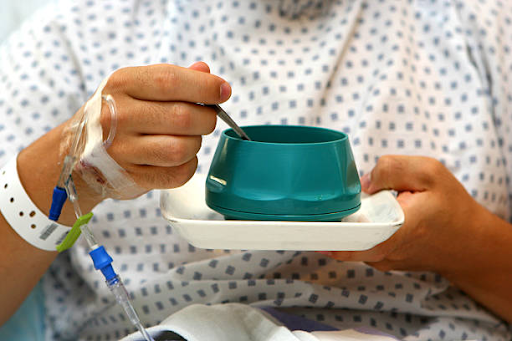Introduction
Sips Surgery is a minimally invasive laparoscopic procedure used to treat gastroesophageal reflux disease (GERD). It involves the use of tiny instruments and cameras to make small incisions in the abdomen. The surgeon then reconstructs the lower esophageal sphincter (LES), which is a muscle that helps keep acid from rising up into the esophagus.
This procedure can reduce or even eliminate symptoms of GERD, such as heartburn and regurgitation. Sips Surgery has been shown to be effective in treating both long-term and short-term cases of GERD, providing relief without major complications. Know more information about Sips surgery.

Benefits of SIPs Surgery
SIPs surgery, also known as Selective Internal Palliative Surgery, is a cutting-edge medical procedure that provides relief from chronic pain and discomfort. It involves the implantation of special palliative devices directly into the body’s internal organs to provide targeted relief without the need for medications or invasive procedures. This form of surgery can provide multiple benefits for patients who suffer from chronic pain or discomfort due to conditions such as fibromyalgia, rheumatoid arthritis, spinal stenosis, and other musculoskeletal issues.
Improved Posture and Balance – One major benefit of SIPs Surgery is improved posture and balance. By alleviating pressure on certain areas in the body which can cause pain or discomfort during movement, this procedure helps to improve posture by allowing patients to move more freely without fear of irritation or strain. This improved mobility can help reduce pain while also improving one’s overall balance and stability during daily activities.
Risks of SIPs Surgery
SIPs (Selective Internal Pneumonectomy) surgery is a procedure that involves removing a portion of the lung in order to treat certain types of cancer, including lung cancer and other diseases. While this procedure can be beneficial for some patients, it also carries with it certain risks that should be taken into consideration prior to undergoing the surgery. In this article, we will discuss the potential risks associated with SIPs surgery.
One of the primary risks associated with SIPs surgery is pulmonary complications. The removal of a portion or all of one’s lungs can cause an imbalance in air and fluid flow within the lungs, leading to difficulty breathing and other pulmonary issues. Additionally, due to reduced lung capacity after having undergone SIPs surgery, there is an increased risk for infection as well as pneumothorax – which occurs when air builds up between layers in the lungs resulting in collapse and decreased oxygen levels within the body.
Another major risk associated with SIPs surgery involves cardiovascular complications such as heart attack or stroke. During this type of procedure, blood vessels may become damaged due to surgical trauma or from being clamped off during dissection which could lead to further issues down the line such as blood clots forming.

Preparation for SIPs Surgery
SIPs surgery, also known as selective intraoperative proximalization, is a minimally invasive surgical procedure used to treat certain spinal conditions. It’s a relatively new technique and can be an effective way to reduce pain and improve mobility. As with any surgery, preparation is essential for a successful outcome.
The first step in preparing for SIPs surgery is to have an evaluation with your doctor. Your doctor will assess your medical history and symptoms in order to determine if this type of procedure would be beneficial for you. In addition, they may order imaging tests such as x-rays or MRI scans in order to get a better view of the anatomy of your spine and identify possible areas that may need correction. Once the evaluation has been completed, you’ll be given detailed instructions about how to prepare for the procedure so that it goes as smoothly as possible.
It’s important that you follow all pre-operative instructions from your doctor carefully before undergoing SIPs surgery. This may include changing medications or stopping certain activities prior to the operation such as smoking or taking aspirin products which can increase bleeding risk during surgery. You should also plan ahead by making arrangements for transport home after the procedure and having someone stay with you at least overnight.
Procedure for SIPs Surgery
SIPs (submuscular implant placement) surgery is a cosmetic procedure that is becoming increasingly popular. It involves the placement of implants under the chest muscles to increase breast size and shape. The procedure can be performed as an outpatient procedure, meaning you won’t have to stay in a hospital overnight. Here is a step-by-step guide to what you should expect during SIPs surgery:
- Consultation: Before the procedure, you will need to meet with your surgeon for a consultation. During this time, they will discuss your desired outcome, answer any questions or concerns you may have, and assess your medical history in order to determine if SIPs surgery is right for you.
- Pre-operative appointment: At this appointment, your surgeon will go over all pre-operative instructions with you such as what medications and supplements should be avoided before surgery and which tests should be done prior to the operation (such as blood tests).
- Surgery day: On the day of your SIPs surgery, your doctor will give you an injection of local anesthesia so that only the area being worked on feels numb during the operation itself – no general anesthesia required!
Recovery from SIPs Surgery
SIPs (Spinal Infusion Port) surgery is a relatively new type of minimally invasive spinal surgery used to treat chronic pain. This procedure involves inserting a port into the spine and then implanting an infusion pump that delivers medication directly to the area of the spine where the pain is experienced. The goal of this procedure is to provide long-term relief of chronic pain without major surgical intervention or side effects. While SIPs surgery can be effective in relieving chronic pain, it is important for patients to understand what recovery will look like and how they can best care for themselves after their procedure.
Immediately following SIPs surgery, patients are typically prescribed opiate-based medications in order to manage their post-operative pain. It’s important for patients to closely follow their doctor’s instructions regarding these medications and not take more than instructed or discontinue use without consulting with their doctor first as this could have serious consequences on recovery time and overall health outcomes. Additionally, physical therapy may also be recommended after SIPs surgery in order to help strengthen the muscles surrounding the spine and improve overall flexibility in order to reduce the risk of further injury or complications down the road.
Conclusion
Sips surgery is a minimally invasive procedure that can be used to treat a variety of conditions, from hernias to gallstones. It is a safe and effective procedure that offers patients an efficient way to reduce pain and discomfort associated with these types of issues. The recovery time for Sips surgery is typically short, with most patients able to return home the same day or within 24 hours after the procedure. The risk of complications associated with Sips surgery is extremely low when compared to traditional open surgeries, making it an attractive option for those seeking treatment for their condition.

